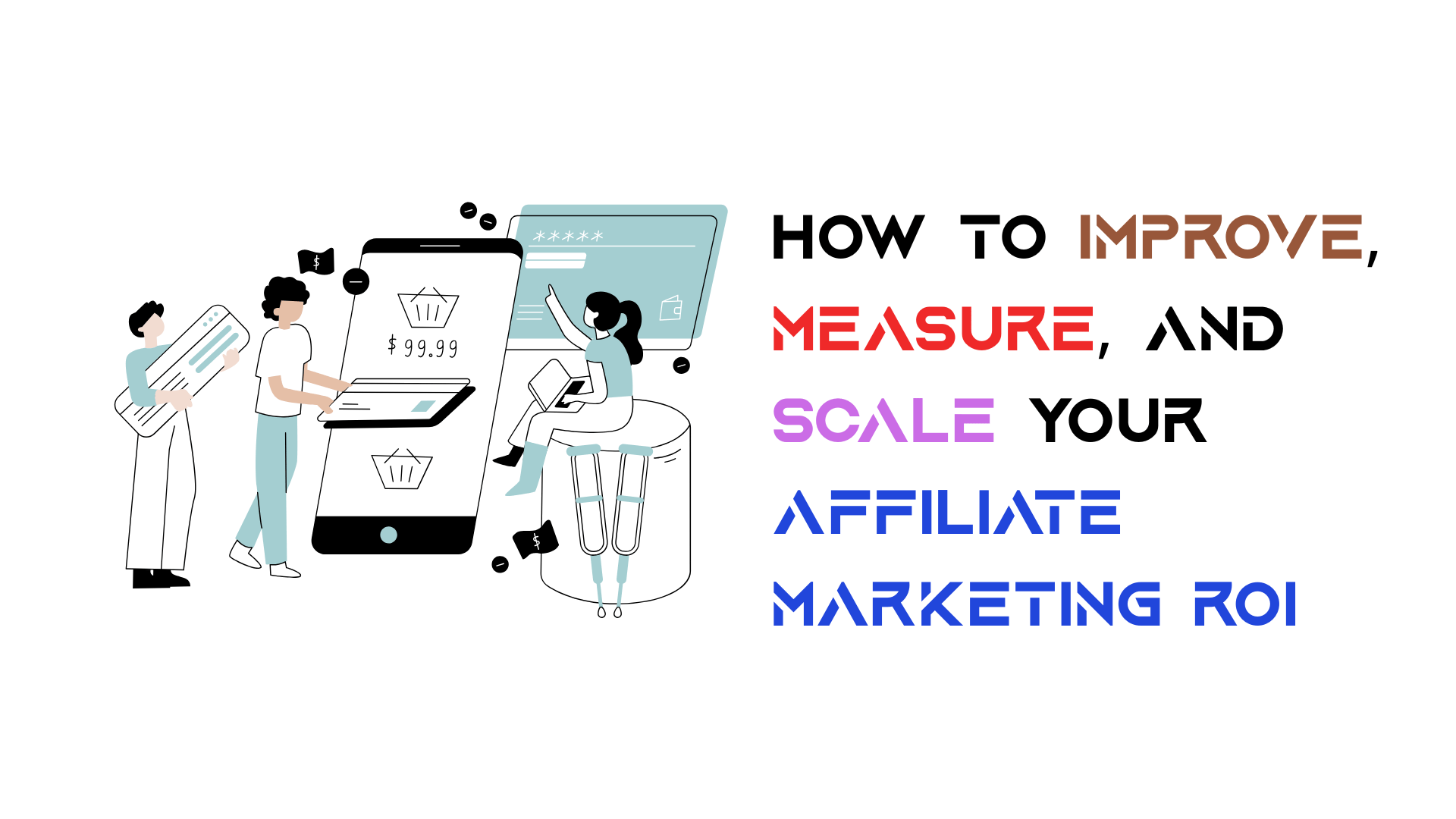Digital Marketing Tactics for Small Businesses
In today's digital age an online presence and right digital marketing tactics are crucial for any business, no matter its size. In the 21st century having an online presence has proven the most effective way to reach customers and drive growth. Many small businesses have limited marketing budgets. However the good news is that there are many high-impact yet low-cost ways to effectively market your small business online.
With some creativity and strategic thinking you or your marketing agency can build digital marketing campaigns that deliver results without breaking the bank. This guide outlines some simple and cost-effective steps you can take to make every marketing cent count.
Conduct Keyword Research

Before creating any digital content or ad campaigns it’s important to conduct keyword research, which will identify what your potential customers are searching for online. Understanding what your target customer’s intent and interests are when they search for things on the internet helps you create content which answers their questions and speaks to their needs. Knowing how to optimize a paid search campaign can also greatly enhance your reach and efficiency.
You can use free keyword research tools like Google’s Keyword Planner to find low competition, long-tail keywords with decent search volume. To use Google Keyword Planner, simply sign in to your Google Ads account (or create one), then click on “Tools & Settings” at the top of the page and select “Keyword Planner” from the drop-down menu.
There are two main ways to use this tool: “Discover new keywords” and “Get search volume and forecasts.” “Discover new keywords” will suggest new keyword ideas for a product or service related to your business, based on related searches and their monthly search volume. “Get search volume and forecasts” shows data on how often particular keywords words are searched for each month, the competition level of each and estimated cost per click (CPC) if advertising with those terms.
Focusing your efforts on ranking these precise search queries through search engine optimization (SEO) is key for small businesses with limited resources. The data is there, and free, so let the machines do the work.
Leverage Social Media

Social media platforms offer free or low-cost opportunities to reach targeted audiences. However, the trick is to use them more wisely than your competitors, as they offer the same advantages to any business. For instance, you can attract TikTok audiences by creating engaging and trendy content that resonates with their interests and preferences. Partnering with a TikTok shop agency can further amplify your reach, helping you optimize strategies and maximize sales on the platform.
You will get the best results by focusing on one or two platforms that your ideal customers use rather than trying to manage accounts on every site. Here are some tips on how a small business can identify the best platforms:
Do Market Research: Sources such as Pew Research Center and Sprout Social have data on which platforms groups such as Millennials, Gen Z, suburban moms, etc use most. This gives insight into where your buyers are and aren’t.
Check Competitors: Research direct and indirect competitors to see where they have the largest followings and engagement. Chances are your ideal audience overlaps if you’re in the same niche or industry. Make note of the top platforms for those similar brands.
Ask Existing Customers: Survey existing customers on which social sites and apps they use on a regular basis. This provides first-party data directly related to your current customer base’s preferences.
Use Social Listening: Tools like Mention, Mentionlytics, and Keyhole track brand mentions and relevant hashtag conversations across the social web. The platforms generating the most volume around your business and niche can indicate where your market is concentrated.
Test Multichannel Ads: Run inexpensive test paid ad campaigns across Facebook, Instagram, LinkedIn, etc, using AI-powered ad creation tools to streamline the process and drive users to the same landing page to compare performance. The platforms delivering the most conversions will likely reach more of your target audience. Using Meta Ads in this process will help you with precise targeting, broad reach, competitive analysis, and budget efficiency, ensuring your campaigns are optimized to connect with the most relevant audience.
Having thus identified your two best site options, develop shareable content like behind-the-scenes images, quick videos, or expert tips aligned with your brand that will resonate with followers. This is best achieved by seeing what is already out there, and thus what your audience is used to, and putting a personal spin on the same familiar format. You can also enhance your brand's visual identity by using a logo maker AI to create a unique and professional logo that aligns with your content and audience.
Making social media engagement personal and conversational enables small businesses to build lasting connections. Paid social ads can further amplify content, even with as little as $10 per day on Facebook or Instagram promotions targeted to relevant demographics and interests.
With the convenience of eSIM technology like Simify, marketers can stay connected seamlessly while traveling. This eliminates the need for changing SIM cards or dealing with roaming charges, ensuring uninterrupted access to digital marketing tools.
Tap into Influencer Marketing
Influencer marketing has become increasingly popular for the high engagement it drives. Nano and micro-influencers are affordable options for small businesses.
You access these influencers by searching social sites for creators with 1K to 100K engaged followers whose work is relevant to your product and/or demographic niches. You can propose to gift them products or exclusive content in exchange for them producing posts and stories featuring your brand. For example, if you run a fashion store specializing in men’s designer shoes, you can talk to a style influencer and offer him a pair of high-end men’s designer shoes, and in return, ask him to feature your brand in his content. To maximize the reach of such collaborations, using services like twicsy can further strengthen your brand’s presence online.
Use relevant hashtags in a follow-for-a-follow approach to further expand your organic reach. Even if you have a limited following of your own, sharing user-generated content builds credibility with wider audiences and presents you as a serious player.
Network Locally
While establishing an online presence is key, connecting face-to-face with customers in your community can’t be undervalued. Knowing what you look like and where your building is will put you at the forefront of “practical memory”, i.e. answering the question of “who do I know who does this?”
To introduce your products and brand, use a marketing flyer template to create captivating promotional materials for local business events, trade shows, conventions, and networking meetups. Flyer templates make it easy to create professional business graphics and images. Even though some of these tools charge you for the templates, others allow you to use them for free. And finally, don't forget about AI, with Blaze AI and other similar platforms you can easily leverage this trendy technology to edit your images and align it with the message you're trying to convey. To boost your local efforts with a stronger online presence, consider link building through NOVO Marketing to increase your visibility and credibility in search results.This approach will help you draw in a larger audience and make a memorable impression. Sponsorship is often available at different levels, giving you a coat-tails effect from the bigger sponsors at minimal cost. You should also have a lead magnet like a discount code ready, so you can collect attendees’ emails to build an email list.
Additionally, consider implementing referral programs to leverage satisfied customers as advocates for your business.
You should also identify affordable co-marketing opportunities with complementary neighborhood businesses. When restrictions force event cancellations, live streaming and social media around virtual events provide other low-cost ways to stay visible.
Optimize Your Website for SEO
Your website is the backbone of any digital marketing strategy. Before you invest heavily in online promotions directing visitors to it, your website needs to be fit for its marketing purpose. Working with an experienced SEO agency can help ensure your site structure, content, and technical setup meet best practices right from the start.
Make sure the website has a user-friendly interface, mobile responsiveness, speedy load times and SEO fundamentals in place. These elements not only improve user experience but also save time for both the visitors and the website owner. You can develop a sufficient site through DIY site builders like Wix and Squarespace, which offer quality templates, hosting and built-in SEO tools for minimal monthly fees. Alternatively, WordPress hosting provides a robust solution for those looking for more customization and scalability.
The website should include a blog that includes long-tail keywords identified from your previous research in its meta descriptions and content. Creating high-quality blog content with in-depth information continues attracting organic search traffic over time through SEO, so when you start your blog, set the appropriate style and update the content at regular, predictable intervals. Monitoring SEO enrollment growth can provide valuable insights into the evolving interests and demands of professionals in the industry, helping you refine your strategies to better resonate with your target audience.
Send Email Newsletters

Good old-fashioned Email is still considered one of the highest-converting digital channels. A lot of energy and spending can be saved by utilizing this common tool effectively.
You can use an affordable provider like Mailchimp (free for up to 2,000 subscribers) to set up professional email sequences targeted to your particular website visitors. You can grow your subscriber list by promoting signup forms and offering exclusive discounts or content.
As you have already identified your target customers and then seen that targeting reflected in the details of your subscribers, you can send regular newsletters containing valuable content, special offers, product releases, and company news your customers will look forward to receiving. Email capture forms should also be integrated prominently on your website to give you a range of access points. Also, you can work with web development companies before launching your site, to ensure it is running smoothly and has easy navigation even with integrated forms, plus don't forget to add an unsubscribe from email option in your email.
Focus Local SEO Efforts
Ranking higher in local search results essentially provides free advertising and more conversions for service area businesses. Skilful manipulation of the ranking process is what has got other companies to the top of those lists.
To be able to compete in this area, ensure Google My Business and other free business directory listings have complete, accurate details. Local citations contribute greatly to local SEO rankings, so manually submit to dozens of regional directories, whether or not you consider them immediately relevant to your business.
Produce geo-targeted landing pages and blog content optimized for phrases your customers would search for locally. Encouraging customer reviews also boosts credibility, as searchers will look for a local service provider they can trust. Potential customers will often search for reviews first, then investigate the business reviewed, rather than the other way round.
In Conclusion
A strategic, integrated digital marketing plan tailored to core customers doesn’t require an enormous budget to make an impact. Consistency and high-quality content built around long-tail, localized keywords drive organic growth in website traffic and conversions over time.
Small paid promotions across select social platforms and sophisticated email marketing amplify overall efforts further. With smart budget allocation and resource investment in the methods outlined here, small businesses can elevate online visibility with top-funnel targets and steadily nurture their leads until they become loyal customers without knowing it.





